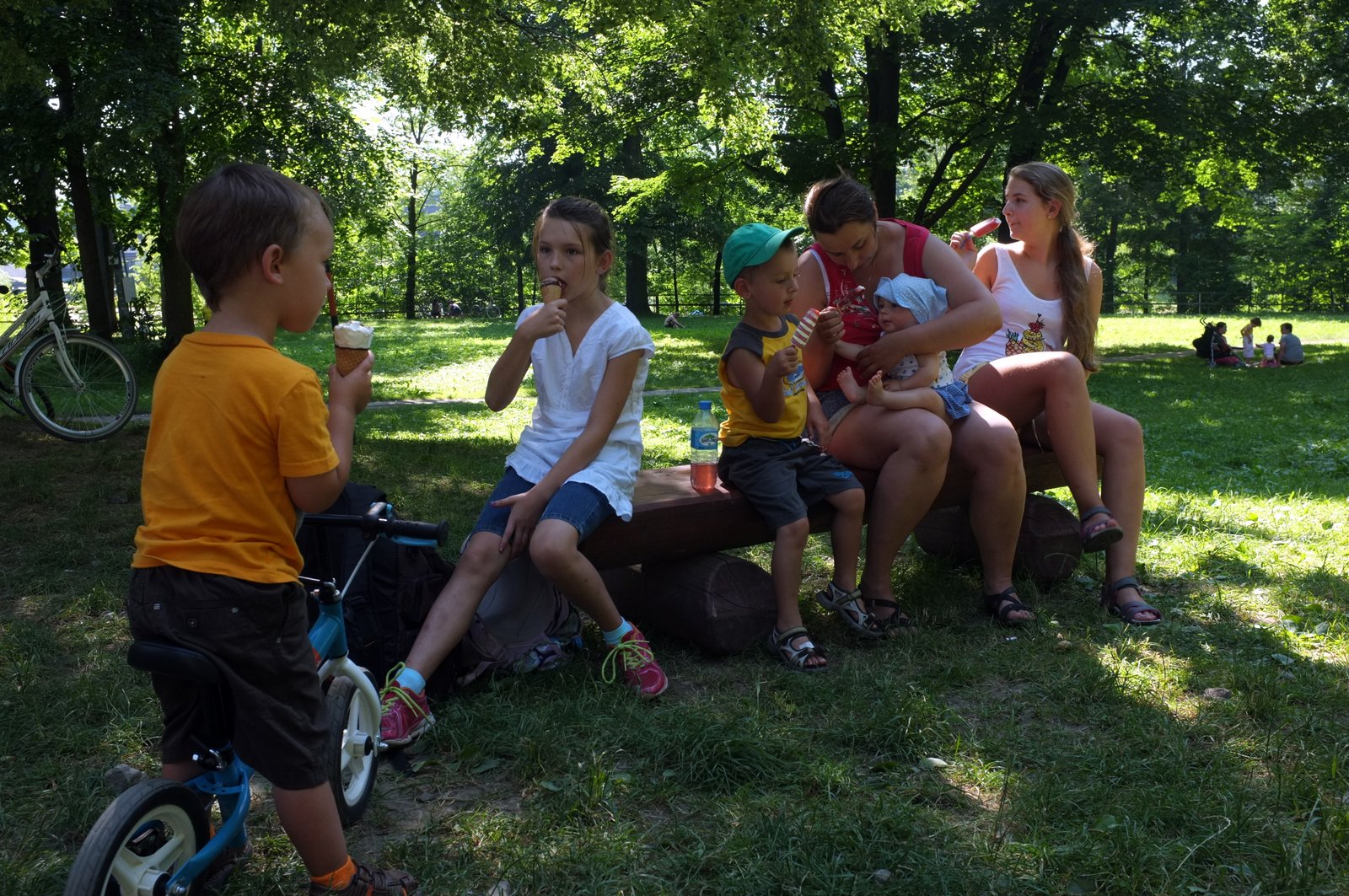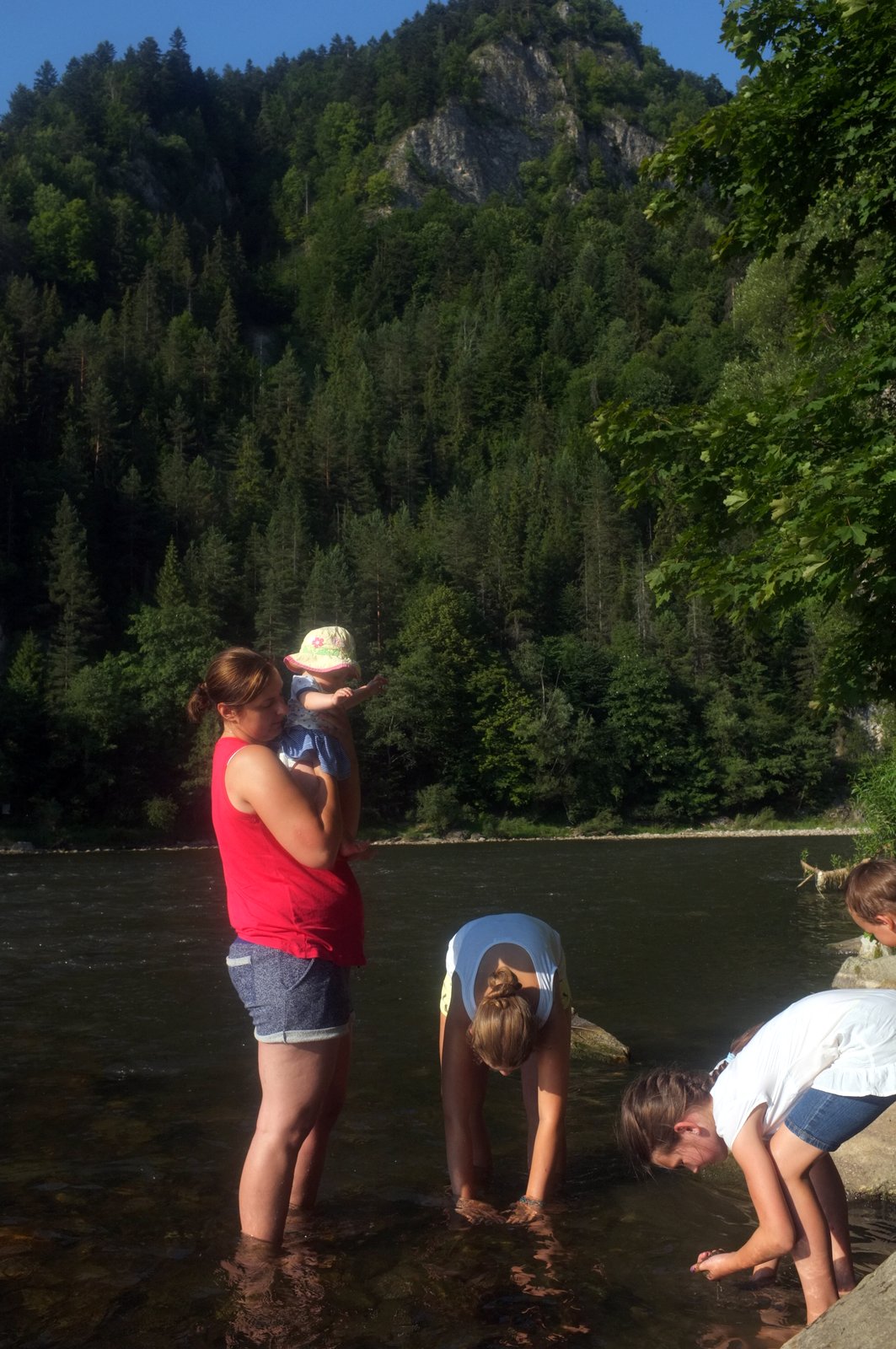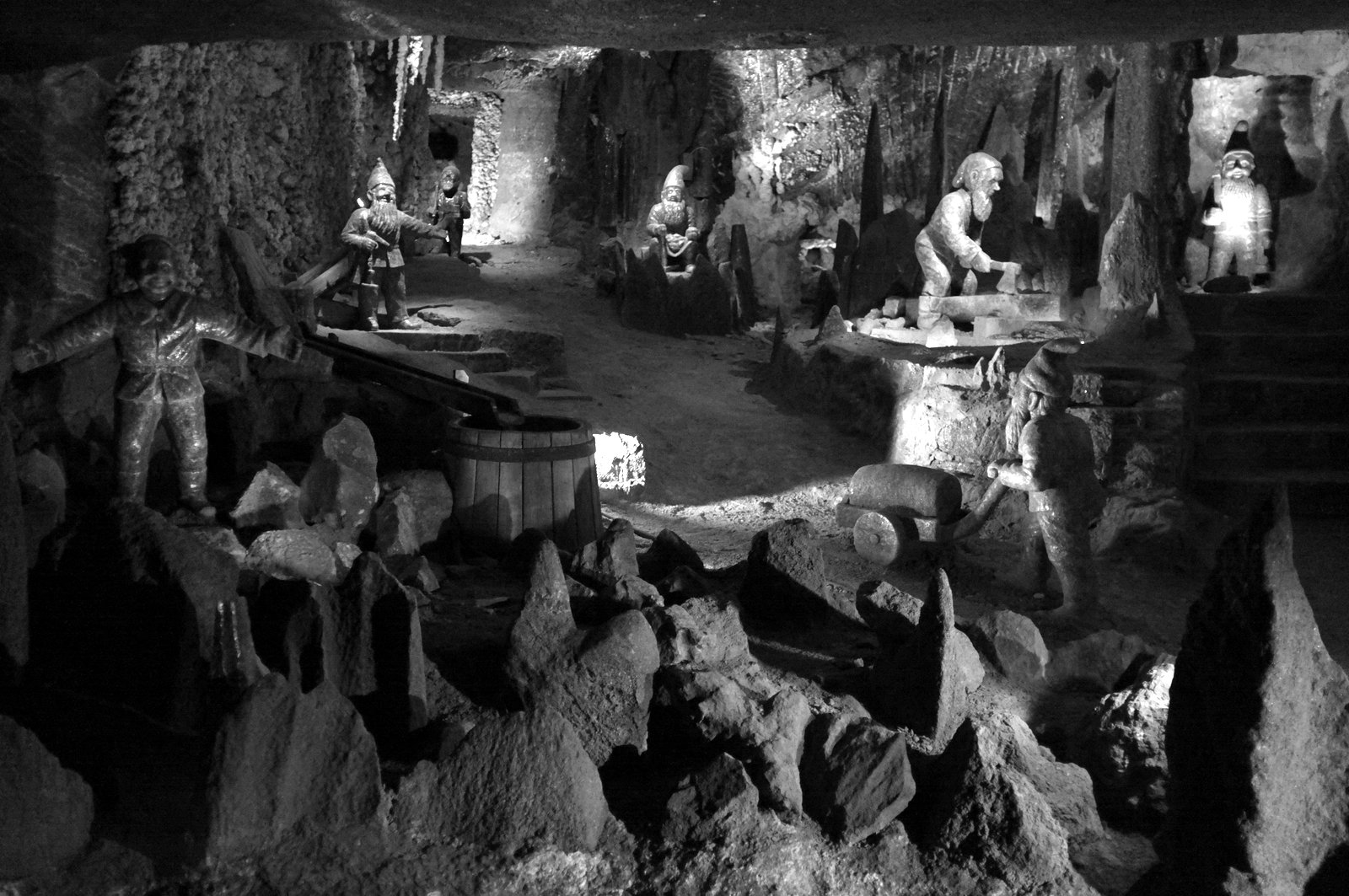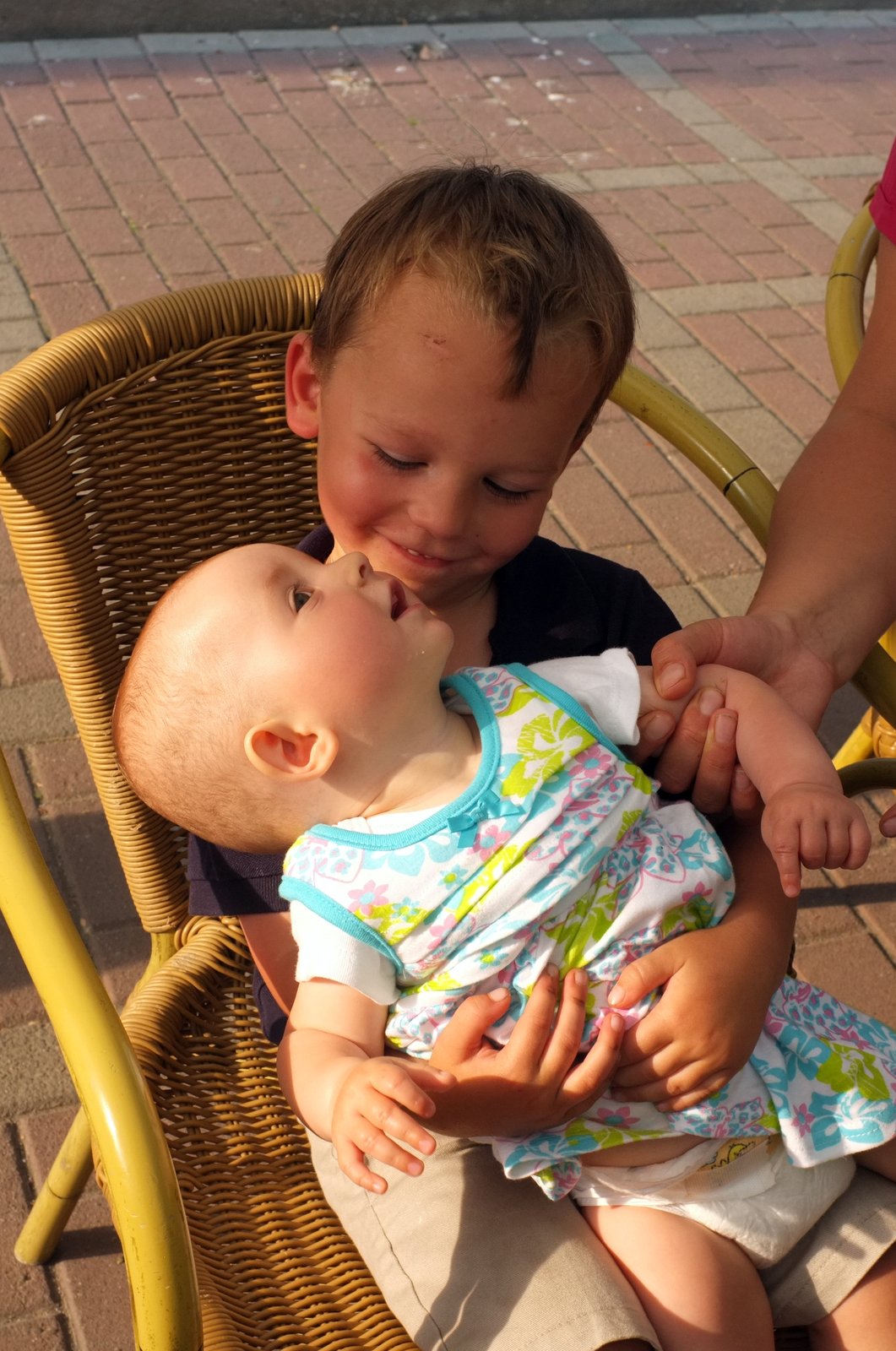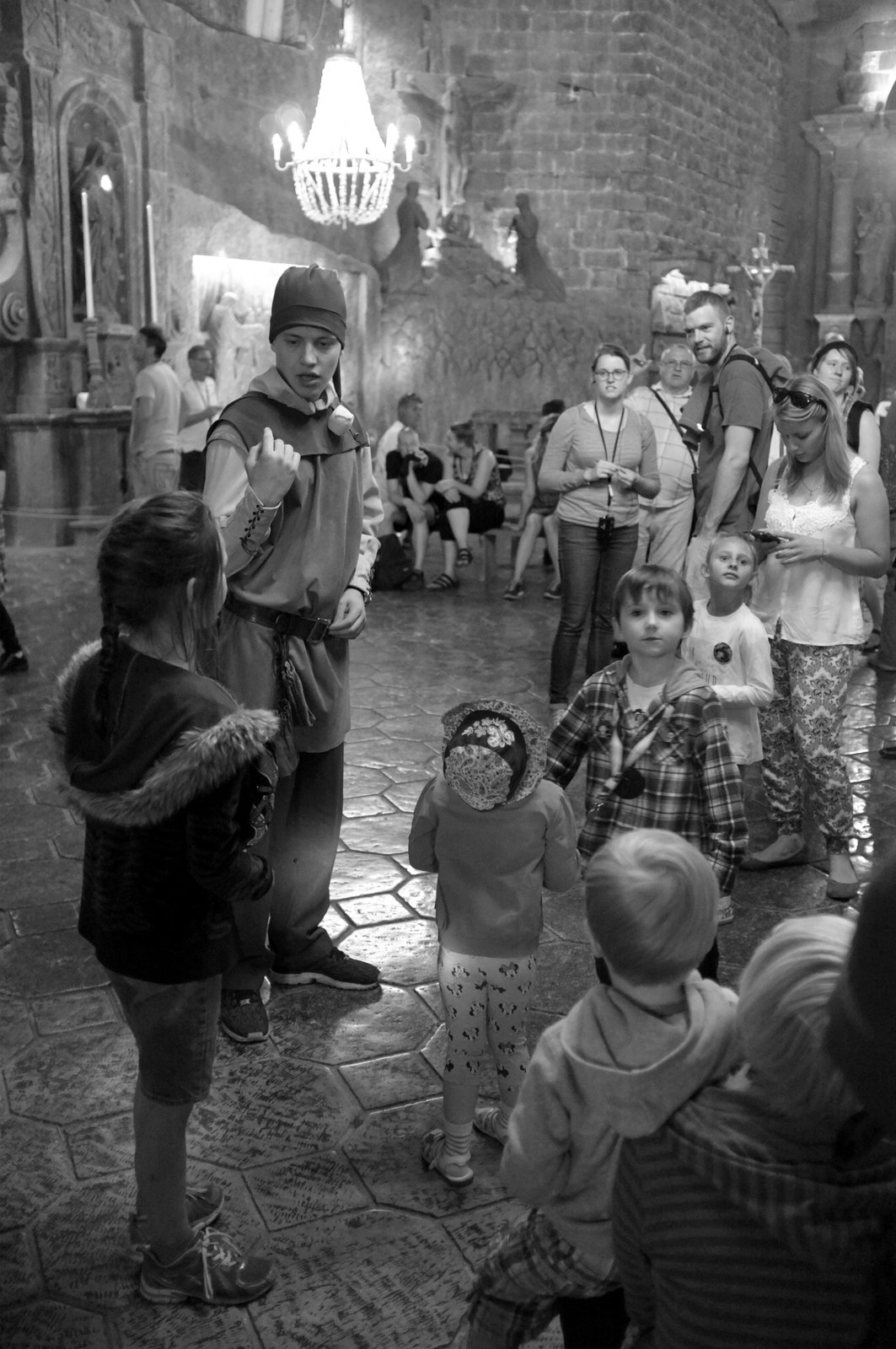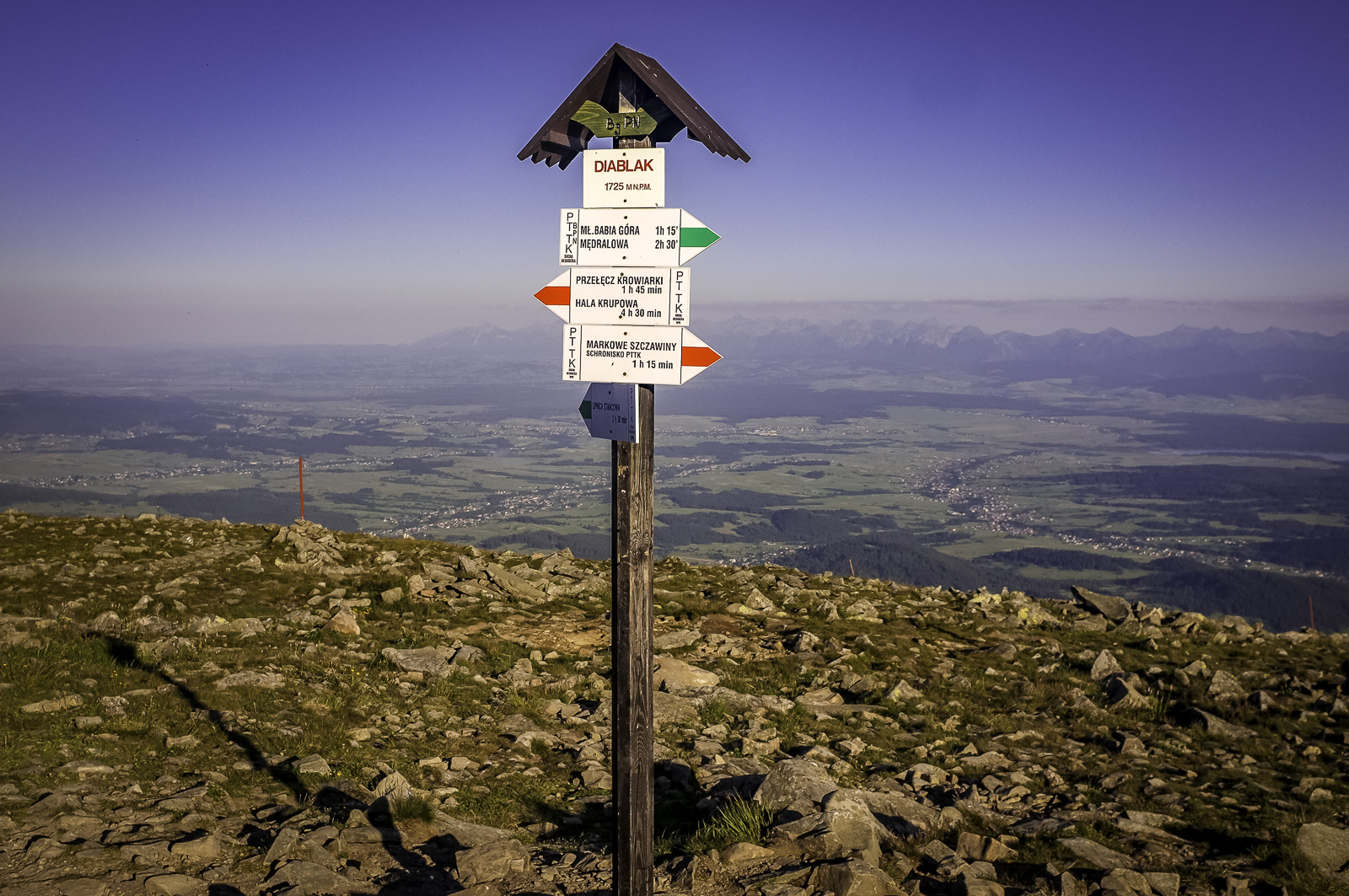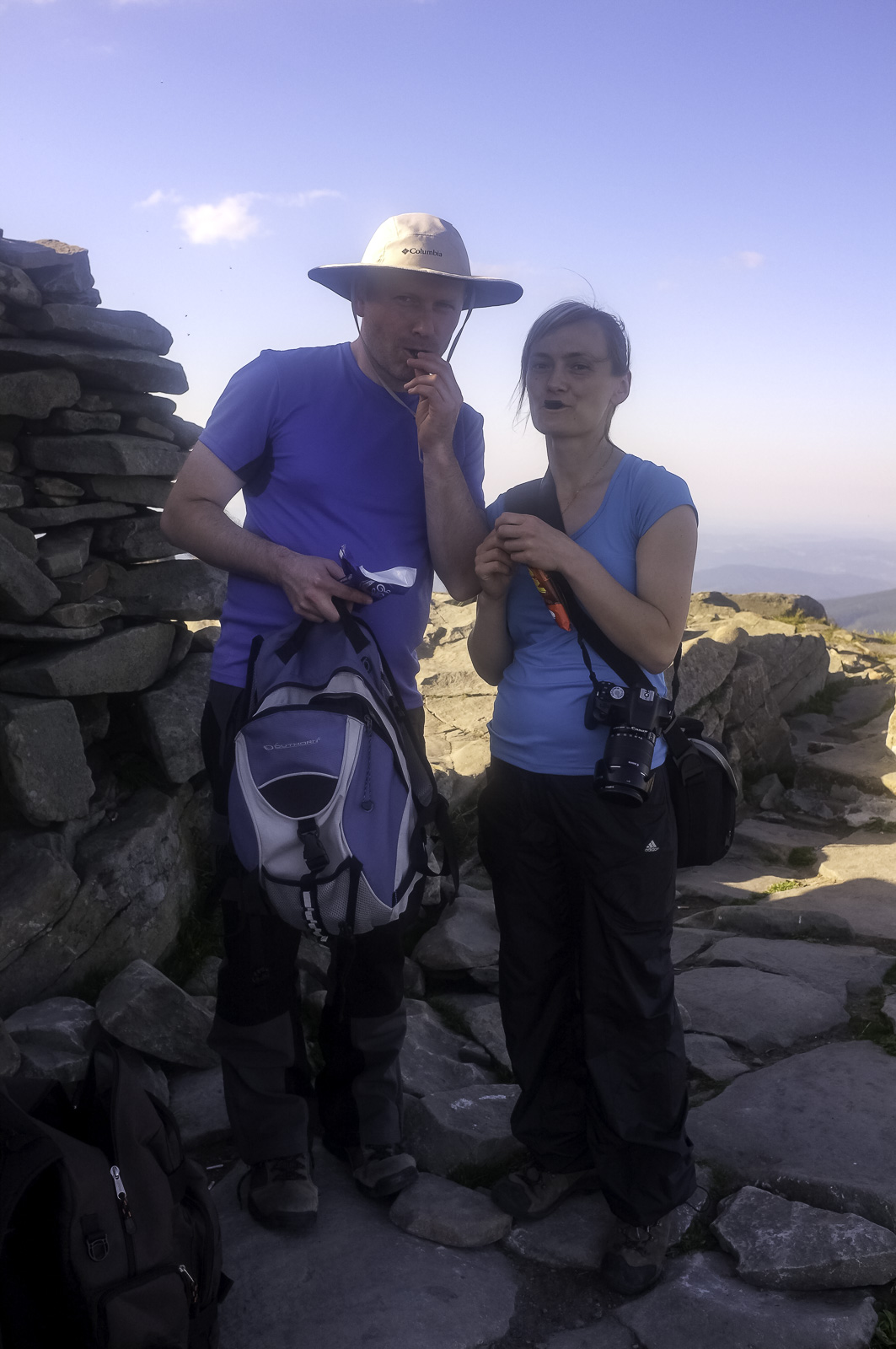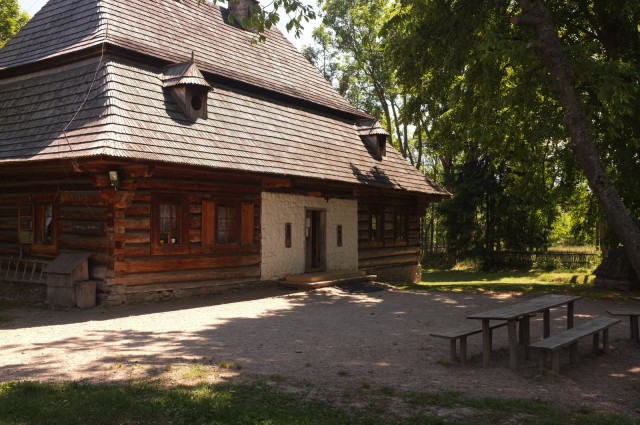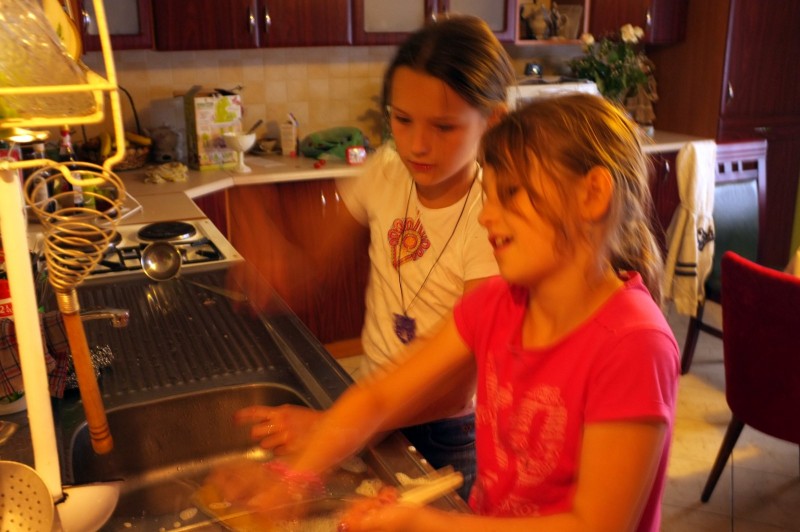The day started with a walk. The walk. The walk we go on several times while we’re here. The walk K and I took together countless times before moving to the States. That walk.

It starts in “town,” so to speak, with fairly common rural Polish views — the metal worker neighbor who also raises ducks and chickens in his yard. K’s parents used to have a similar little farm where they raised chickens, rabbits, the occasional pig. During the Communist period, there were so few goods in the shop that it really was the only way to have access to certain items on a reliable basis.

But within a few moments, the walk leads us into the fields, away from any house. Or at least it used to be that way. These days, the houses are moving further and further into the fields. People are converting beet or potato fields into lots.

But it’s still fairly rare to find single houses out in the middle of a field. They still tend to clump together near the two main roads that go through Jabłonka. We went out in search of mud, getting the kids dressed out in gum boots and jackets, and both kids were completely convinced that we’d find plenty of mud.

We walked among fields of potatoes and various grasses

but in the end, we could only find a few mud puddles. And when we did find puddles, the kids took turns in the small puddles.

In the end, we walked probably close to two and a half miles and had only a little mud on the gum boots to show for it.

In the evening, we headed back to Pyzówka to visit with K’s nearly-sister and a mutual friend from Warsaw whom they met more than twenty years ago at a summer camp and stayed in touch since. The last time the three couples got together, we were, more or less, just that. Three couples. One couple had become a family, but the rest of us were childless and thus, in a certain sense, without responsibility.

Ten years later and among the three couples, six kids are running around. Well, five kids running around and a beautiful nine-month-old taking turns in everyone’s arms.

There were some things that were fairly standard: there was a cook out over an open fire with plenty of meat.

The amount of meat in the average Pole’s diet always made me wonder about those Poles who were vegetarian. These days, that’s a much easier dietary choice. In the mid-90s, it seemed to me that for a rural Pole to be vegetarian, it meant essentially eating potatoes and cabbage and cheese.


Going into the average rural shop in the midst of winter seemed to confirm that suspicion, but perhaps it was just a linguistic issue: I really wouldn’t have been able to ask freely about winter vegetarian dietary options that first winter.
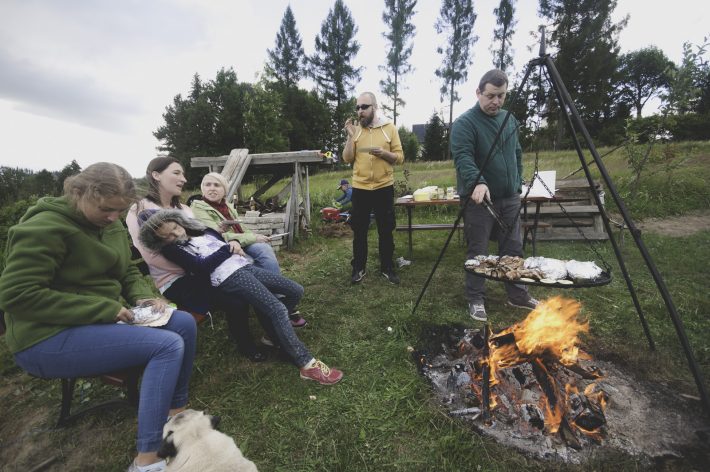

This time around, I’m not the one having linguistic difficulties. The Girl has blossomed into a fairly fluid speaker, but the Boy still struggles. When playing with children, he tends to keep fairly quiet, occasionally saying things like, “Watch this!” but mostly being a silent participant.
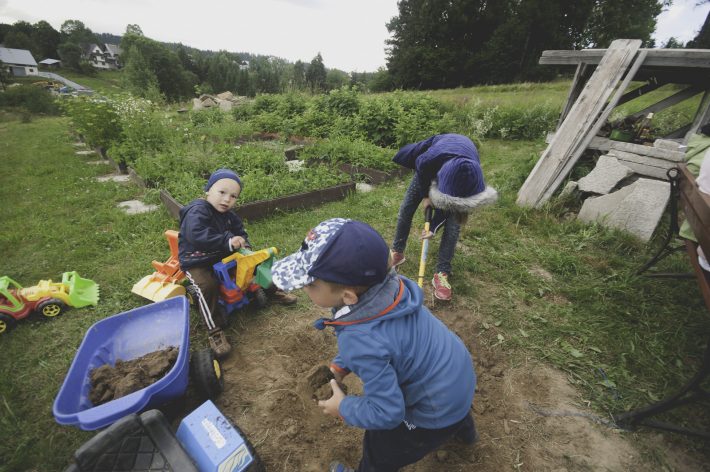
But L was the same way, if memory serves, so I’m not terribly worried about it, and K is not concerned at all.

The day ended with the promise of a beautiful sunset, but unfortunately, the cloud cover returned, and it was a typical gray affair.

But that’s okay too. I always grow a little nostalgic when I return to Poland, and the gray, cold days filled with the smell of coal smoke as people heat their houses in early July fits that nostalgia just fine.






